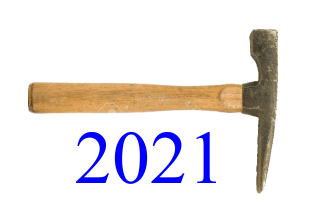Dawn Tobey

M. Sc. Thesis
(PDF - 12 Mb)
The study of dryland fluvial systems has yielded a broad and well established body of work. As rivers in semi-arid and arid environments cover nearly 50% of the present land surface, there are many modern examples to turn to as reference; Australia, India, Africa, and mid-west USA all have examples of dryland fluvial environments that are intermittently active. Many modern examples, as well as those documented in the rock record, are typically associated with sudden high-energy floods that carry fine sand to gravel sized particles. Few examples of dryland river systems have a majority of the sediment in the medium silt to very fine sand range.
The Halgaito Formation of Southeastern Utah is a magnificently exposed section of rock which records the transition from Late Pennsylvanian to Early Permian as seen on the western margin of Pangea. This study documents an interaction between windblown silt, forming loess deposits, and a discontinuous fluvial system that carved into the landscape. The Halgaito Formation is herein subdivided informally into lower, middle, and upper divisions based on the relationship between these two distinct yet interacting environments. An overall upward increase of channel width, depth, and complexity is apparent from the lower to middle divisions, whereas the upper division is marked by overland sheet floods that scoured the landscape, forming small localized depressions and reworking the topmost layer of loess that covered the region. This transition overall records a deepening of the water table, decrease in clusters of vegetation, and an increase of plants with deeply penetrating roots that stem from thin paleosol layers that cap the sheet flood deposits below subsequent loess beds.
Previous to this study, various research teams working within Southeast Utah have published papers for their respective specialties; however, no broader study of the general paleo-landscape and paleo-environment framed these specialized papers. The following research endeavors to do so.
Keywords:
Pages: 103
Supervisors: Martin Gibling /Isabelle Coutand



